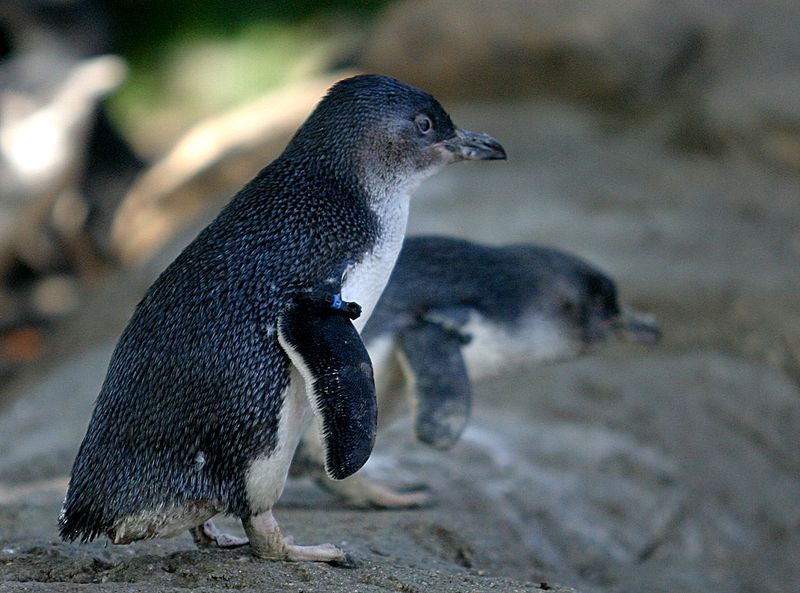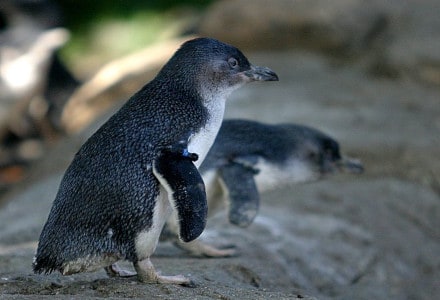
Little Penguin Facts
- The simple term of Little Penguin serves as the most frequently used english language name for this miniature marvel of Natue. The lovely bird has a few others, however. These include the equally descriptive titles of blue penguin and little blue penguin.
- Two local populations of Indigenous Peoples, though, have still other appellations for it. In the native tongue of the Maori, it’s named the kororā. But the Boonwurrung language refers to the wonder of evolution by the name Djinan Yawa-dji Goyeep.
- Within scientific circles it’s most often referred to by yet another moniker. That’s a moderately challenging title for the layperson to pronounce, though. That’s because this flightless variety of bird bears the technical name of Eudyptula minor.
- It received that particular name due to the efforts of the respected German naturalist, Johann Reinhold Forster. He accomplished the first official recognition of it as a separate and distinct species. That noteworthy event took place in 1781.
- Thankfully, the Little Penguin appears to be maintaining a population base that’s both stable and sufficient. That pleasant trend also seems to hold true throughout its entire range. The IUCN thus currently lists it as Least Concern on its Red List.
Related Articles
Little Penguin Physical Description
First and foremost, the wonderful Little Penguin clearly lives up to its most often used common name. That holds true due to the diminutive size of the remarkable animal. In its case, both genders attain roughly the same average height and weight.
The beautiful creature does follow a pattern common to its kind. That’s in the fact that it displays a certain degree of the physiological characteristic of sexual dimorphism. In this specific instance, however, that has nothing to do with general size of patterns of color.
Individuals of both genders attain the same approximate physical measurements in their body. Males and females alike reach an average length of only 13 in (33 cm). Both sexes also grow to weights only averaging about 3.3 lb (1.5 kg). It’s the smallest of its kin.
This marvel of Nature presents a striking and unique pattern of coloring. In most specimens, this includes the head, wings, and back presenting a distinctive blue shade. Yet the front of the animal differs. This portion of the body displays a relatively bright shade of white.
The Little Penguin additionally manifests patches of a light gray surrounding the ears. These themselves develop as compartively small. The feet also present a distinctive appearance. These show a light pink on the upper side, while the soles present a deep black.
The gender-based physical difference in the species shows itself in an unusual manner and location. Between the genders, the bill that both possess attains different lengths. Those of the females of the species remain slightly shorter than those of the males.
- Kingdom: Animalia
- Phylum: Chordata
- Class: Aves
- Order: Sphenisciformes
- Family: Spheniscidae
- Genus: Eudyptula
- Species: E. minor
Little Penguin Distribution, Habitat, and Ecology
The remarkable Little Penguin inhabits a hard-to-define region of the globe. That’s because its zone of habitation is broken and somewhat widely dispersed. Though it appears across a broad range, it only lives in widely scattered groupings within that.
The majority of its numbers make their home in the country of New Zealand. The next largest known concentration of the flightless wonder lives in certain sections of Australia. Yet small populations also appear in such places as Chile and even South Africa.
Wherever it appears, though, the bird displays decidedly strong preferences in terms of its habitat selection. In all areas where it lives, it appears almost exclusively along the immediate coastline. It does live slightly further inland on a few tiny islands, however.
Like all known varieties of penguin, the aptly-named Little Penguin evolved an entirely carnivorous diet. Also mirroring related species, this mainly consists of various small species of fish. However, it also dines on the occasional small crustacean and cephalopod.
Despite its small size and apparent vulnerability, the remarkable animal itself has very few known natural predators. The few species known to hunt it include sea eagles and long-nosed fur seals. It’s probable, though, that it has others that are simply unknown to us.
Species Sharing Its Range
Check out our other articles on 4 Fantastically Fascinating Fungi, Komodo Dragon, Rainbow Eucalyptus, Pink Fairy Armadillo, Iridescent Bark Mantis, Lime Butterfly, Fire Salamander

